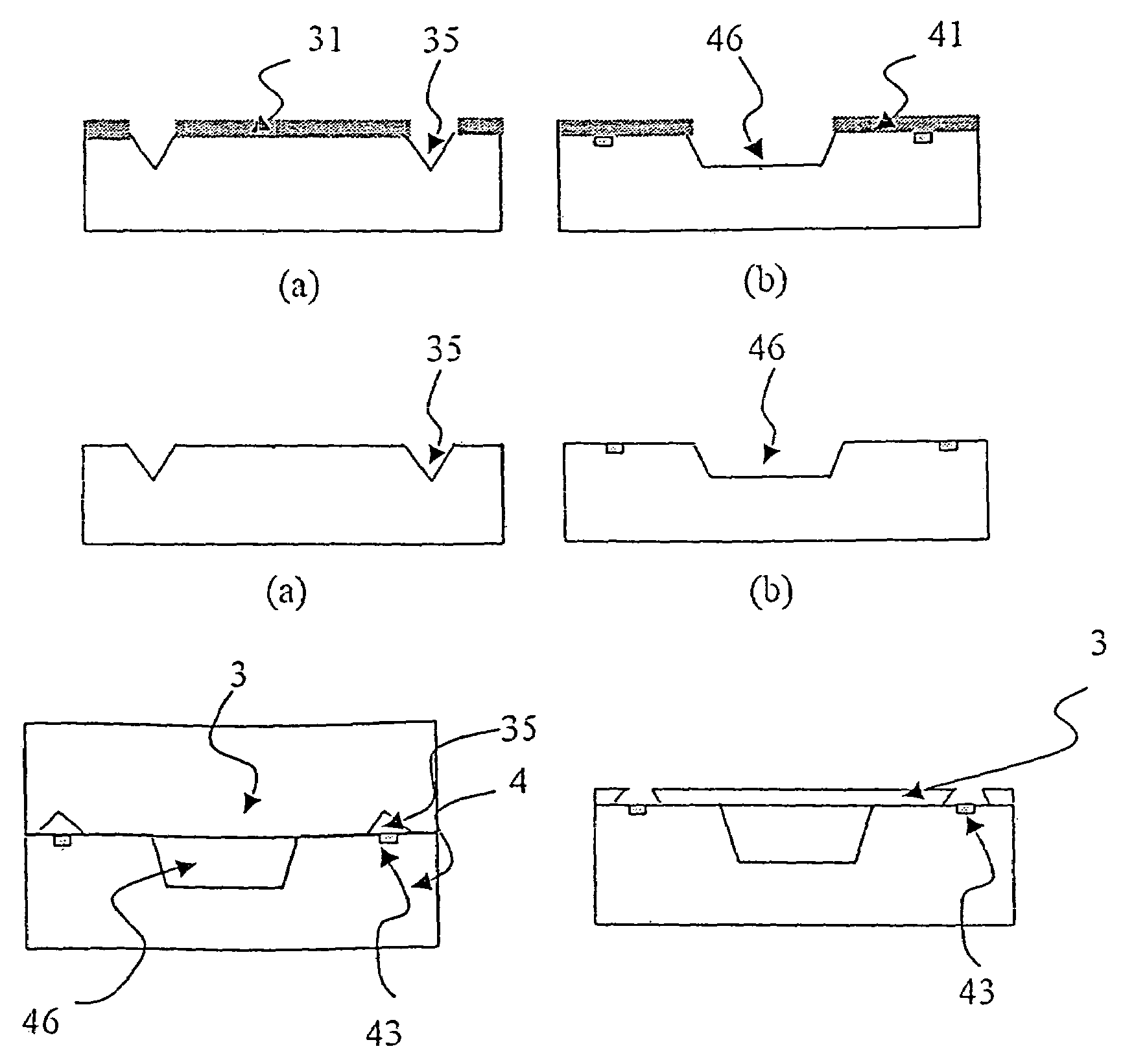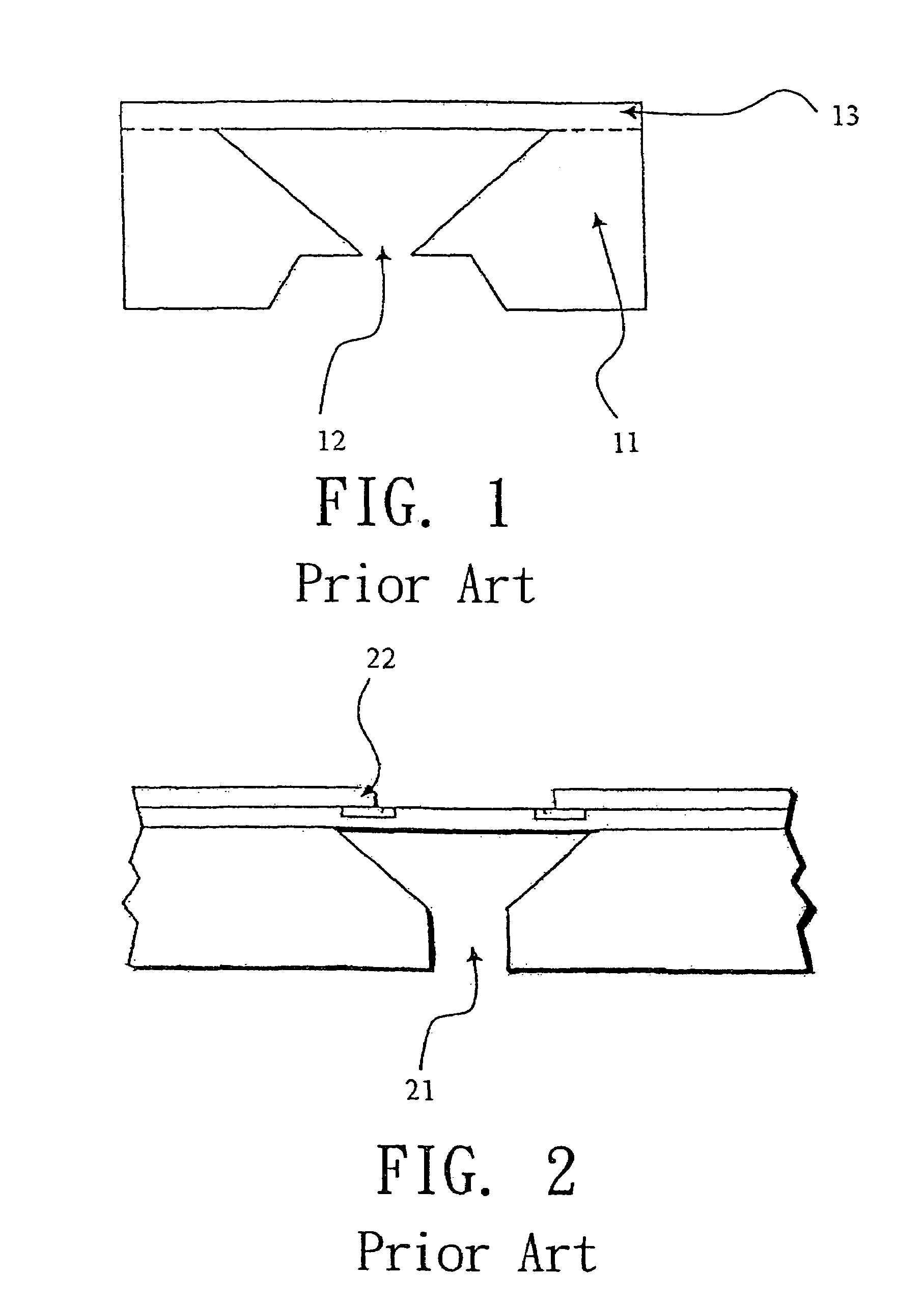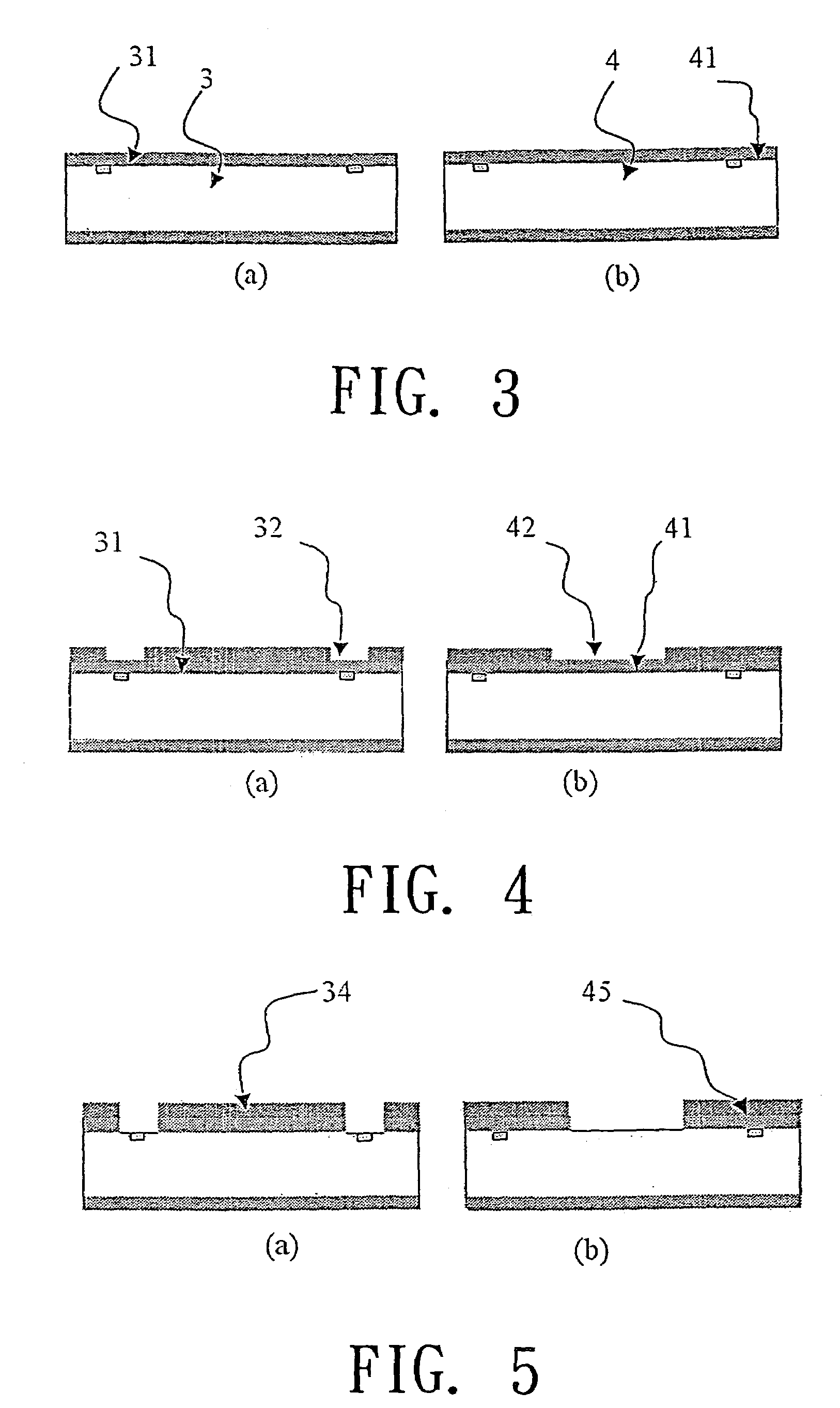Method of maintaining photolithographic precision alignment after wafer bonding process
a technology of photolithographic precision and bonding process, which is applied in the direction of instruments, optical elements, mountings, etc., can solve the problems of reducing affecting the performance of the device, and affecting the alignment accuracy of the wafer, so as to achieve the effect of easy exposure and upgrade the alignment precision
- Summary
- Abstract
- Description
- Claims
- Application Information
AI Technical Summary
Benefits of technology
Problems solved by technology
Method used
Image
Examples
example
[0029]Now, by taking a pressure sensor for example, a n-type silicon wafer is used as a top wafer, while a p-type silicon wafer is used as a bottom wafer. A micro structure for the required cavity is formed on the bottom wafer. Two cavities are made by wet etching on the position corresponding to the alignment marks, and then the top and the bottom wafers are bonded by bonding the surface of the bottom wafer where the cavity is formed with the surface of the top wafer where the cavities are formed. The bonded wafer is then carried through the annealing treatment so as to ensure the bonding reliability. Finally the top wafer is thinned by grinding process to form a membrane with a desired thickness at the value ranging from several μm to ten times of several μm. The thickness of the membrane greatly affects the strength of output signal of a pressure sensor. As soon as the thickness of the membrane is reduced to less than the depth of the cavities formed on the bottom wafer, the alig...
PUM
 Login to View More
Login to View More Abstract
Description
Claims
Application Information
 Login to View More
Login to View More - R&D
- Intellectual Property
- Life Sciences
- Materials
- Tech Scout
- Unparalleled Data Quality
- Higher Quality Content
- 60% Fewer Hallucinations
Browse by: Latest US Patents, China's latest patents, Technical Efficacy Thesaurus, Application Domain, Technology Topic, Popular Technical Reports.
© 2025 PatSnap. All rights reserved.Legal|Privacy policy|Modern Slavery Act Transparency Statement|Sitemap|About US| Contact US: help@patsnap.com



